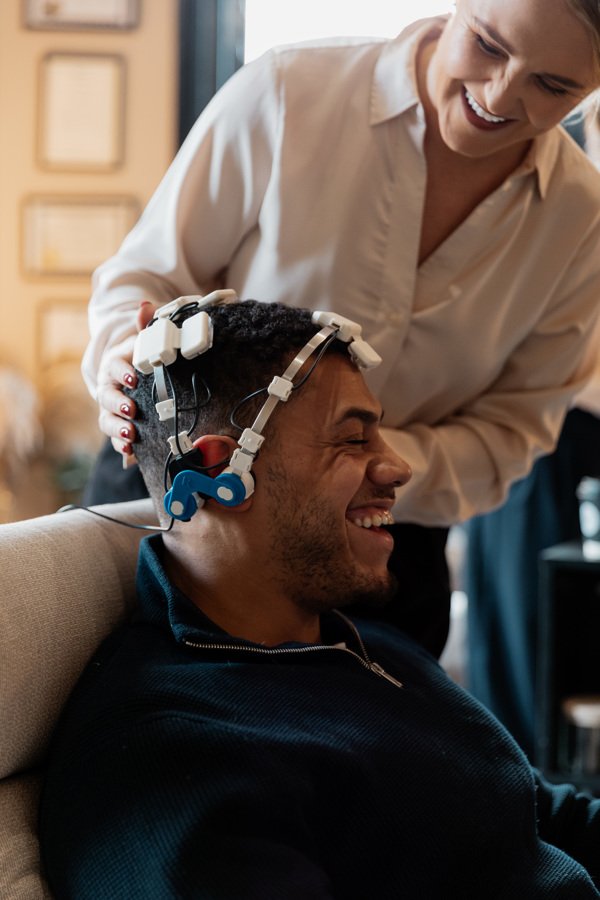
Map your brain
A QEEG, or quantitative EEG brain map, is a sophisticated analysis of your brain's electrical activity using computerised tools, which allows us to assess and understand your brain function accurately.
An essential part of the assessment process at Optiminds is a QEEG brain map. We can only train a brain that we have evaluated first. We are strongly committed to caring for every client we work with, and the QEEG process ensures we can be confident that brain training is an appropriate approach for you.
why are brainwaves important?
Brainwave patterns are integral to our everyday experience of the world. The foundations of all our thoughts, emotions and behaviours lay within the intricate electrical communication networks among the billions of neurons within our brains. Brainwaves (electrical impulses/EEG signals) are produced as these neurons communicate with each other to generate our thoughts, actions and emotions.
When set brain activity patterns are not functioning optimally, there will be corresponding problems, often reflected mentally or physically. Research shows that many cognitive, emotional and bodily issues can be traced back to these sub-optimal brainwave patterns.

How do we look at Brainwaves?
01 A QEEG assessment involves placing a cap with 19 sensors on the head. The gel is placed under each sensor with a syringe to ensure effective conductivity to read the brainwaves. This is entirely painless and non-invasive.
02 You are then asked to sit and relax, staying as still as possible, with your eyes open for around 10 minutes. We then ask you to close your eyes, again staying as still as possible, whilst we record your brain activity for another 10 minutes or so. During this time, the sensors simply listen to your brainwaves and record them on the computer for later analysis.
03 After the in-person QEEG recording, we take time to thoroughly review your entire assessment, consolidating all aspects of the assessment process (symptomology forms, interview, QEEG and performance test). Within two weeks, we will contact you to review your results and make recommendations for your individualised brain training plan.
04 Please note that we are not doctors or psychiatrists and, therefore cannot make diagnoses from a QEEG brain map. A medical diagnosis always requires a full assessment from a licensed physician.
Once you have obtained your results, you can decide if you would like to start brain training sessions; the choice is completely yours.
In our experience, it can be very challenging to get a quality recording with young children below the age of around 5 or 6 years of age. Accessibility depends on age and the child’s stage of development.


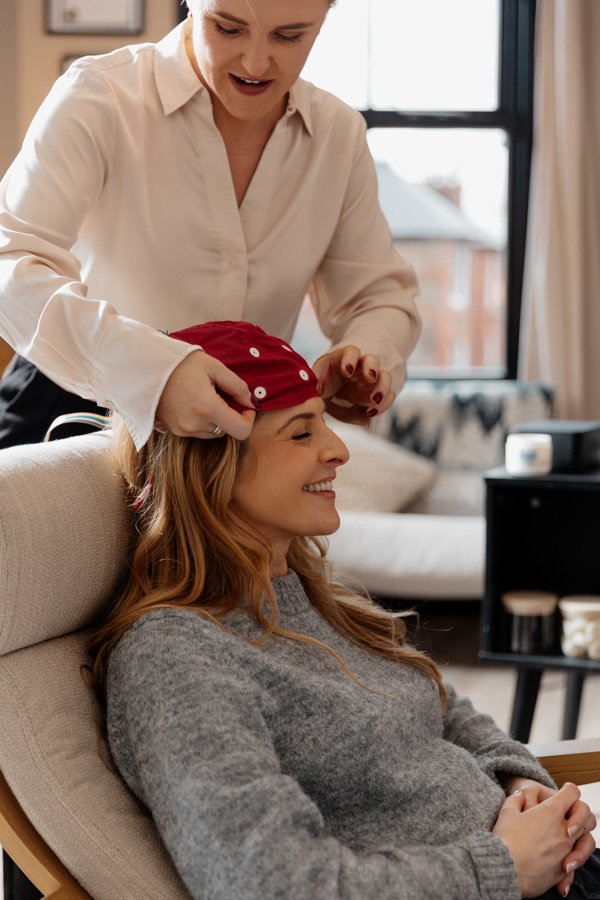
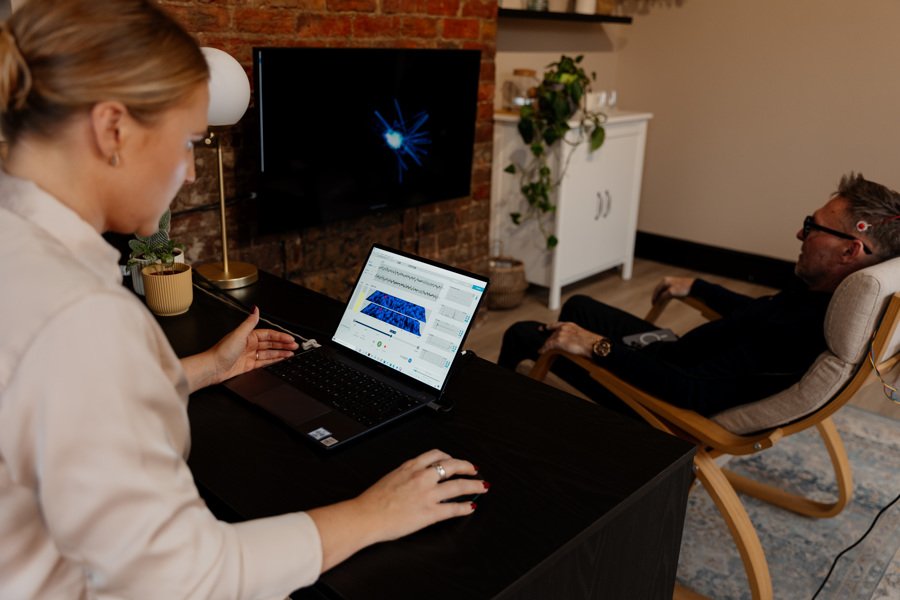
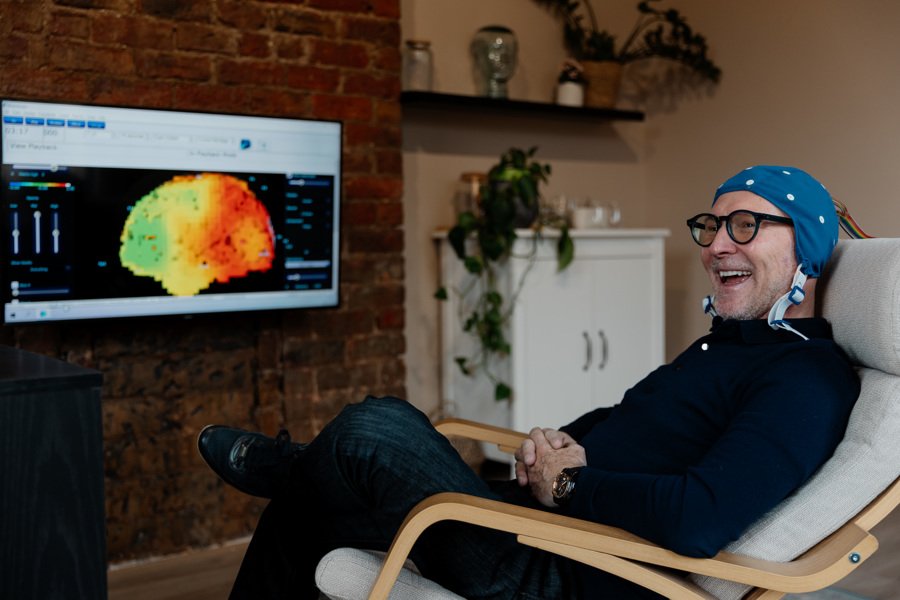
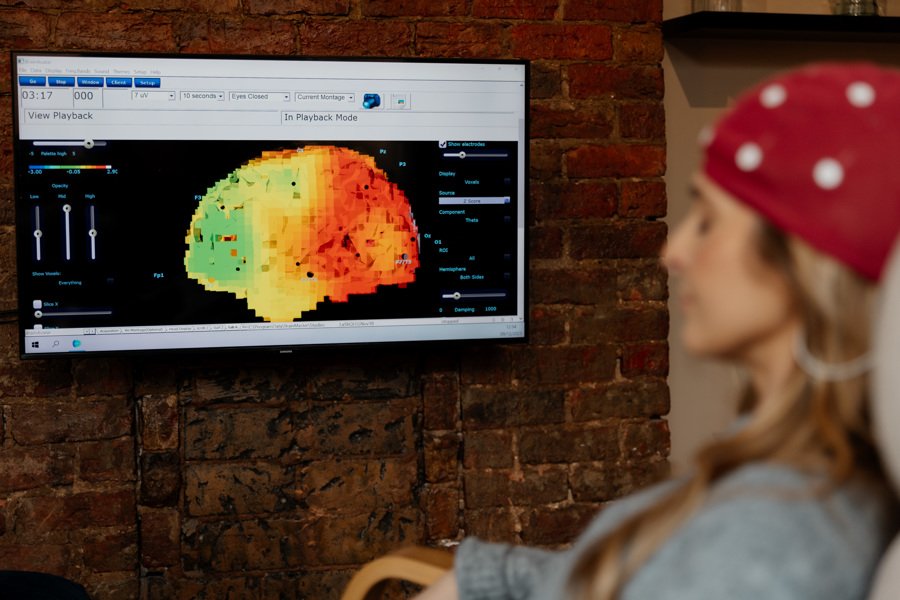


What can you see in a QEEG Brain map?
A QEEG Brain Map provides precise and detailed information about how your brain's physiology supports your cognitive abilities and emotions. QEEG uses statistical methods to analyse and assess brainwaves by comparing your individual data against a normative database of healthy, high-performing individuals of the same age.
From a QEEG assessment, we can identify;
Frequencies in the brain: Delta (0-4 Hz), Theta (5-8 Hz), Alpha (9-12 Hz), Low Beta (13-16 Hz), Mid Beta (17-25Hz), Hi Beta (26-30Hz), and Gamma (41-70Hz).
The amplitude of brainwaves
Symmetry in the brain
Coherence (quality of connections)
Phase (speed of connections)
Network Integration
These are all crucial patterns and objective measures to evaluate optimal mental functioning.
How to prepare for your QEEG session
Following the steps below before your appointment are critical to obtaining a good quality QEEG study of brain function. The brain mapping results are only as good as the recording, so it is important that you carefully follow each of the steps below:
get good sleep
We appreciate it’s not always easy but try to get a good night’s sleep and rest the night before
have clean hair
Your hair will need to be clean and dry for the QEEG assessment so please avoid the use of oils, gels, hairspray and waxes or any other hair products. Please make sure your hair is dry.
avoid caffeine
Avoid coffee, tea and other caffeinated beverages on the day and make sure you drink plenty of water
inform us of medications
Do share with us details of any current medications you are taking. If you are taking stimulant medication it is preferable to avoid it for 48 hours before the QEEG assessment. This must be done with the consent of your prescribing practitioner.
alcohol and drugs
Tell us if you have used any drugs or alcohol within the last 72 hours
OUr PRICES
We offer all clients a free initial telephone consultation. The next step is a full QEEG brain mapping assessment. Full details of our pricing is available from the link below.









